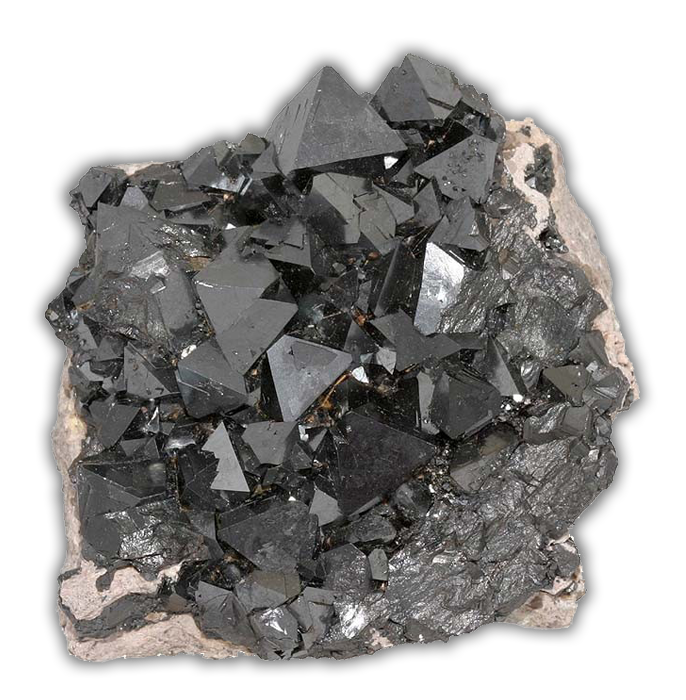Magnetite (also magnet iron, magnet iron stone, iron oxide, or iron (II, III) oxide) is the most stable iron oxide with high resistance to acids and alkalis. It has a cubic crystal system and a chemical molecular formula Fe3O4. One of the iron ions is divalent. The other two are trivalent, so Magnetite is also referred to as iron (II, III) oxide. It has a ‘Mohs’ hardness of 5.5 to 6.5, a black color, a line color, and a matte metallic sheen.
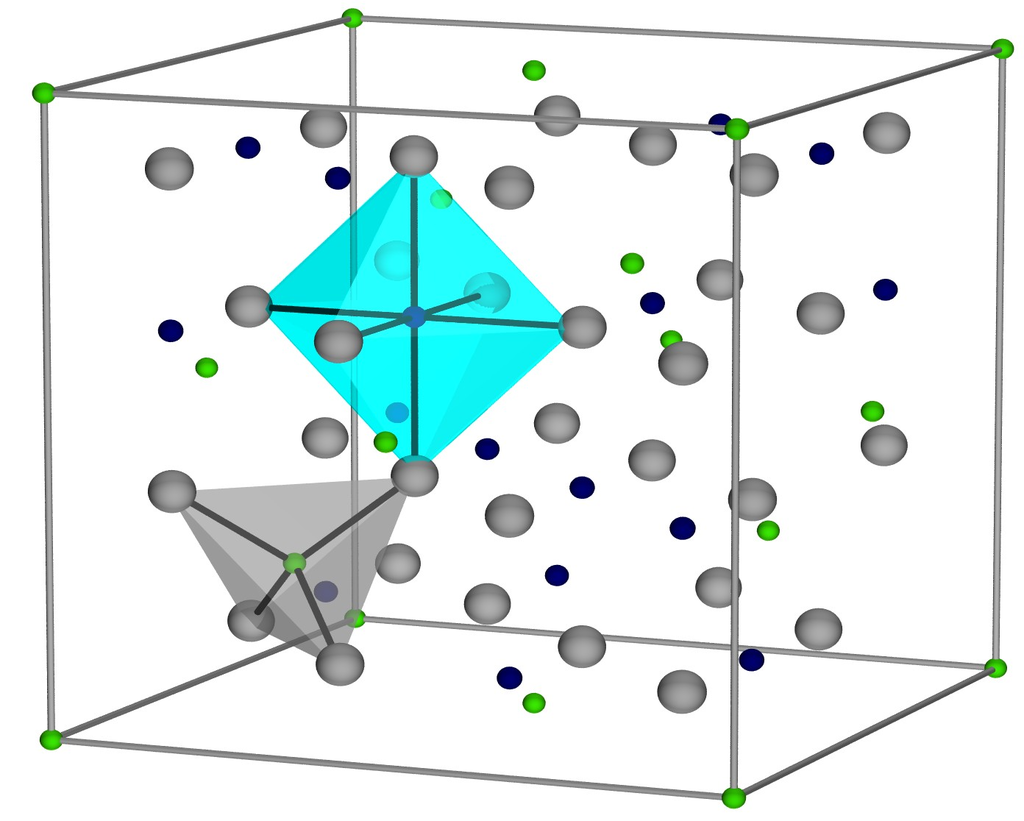

History of magnetite mining
Magnetite is one of the most powerful magnetic minerals. When the temperature falls below 578°C, the magnetization is mostly aligned in the earth’s magnetic field direction. A remnant magnetic polarization of the order of magnitude 500 nT results. In this way, magnetite crystals can preserve the direction of the earth’s magnetic field at the time of their formation.
The investigation of the direction of magnetization of lava rock (basalt) led geologists to observe that in the distant past, the magnetic polarity of the earth must have reversed from time to time. Due to its excellent magnetic properties, Magnetite is still used today in the construction of compasses. As a color pigment, it bears the name iron oxide black.
The name magnet emerged from the Latin name form magnetem (from nominative magnes – magnet). The medieval mineral name Magneteisenstein and the name Magnetit were introduced by Wilhelm Haidinger in 1845.
According to Greek legend, the shepherd Magnes is said to have been the first to find a natural stone with magnetic properties. The shepherd found the stone on Mount Ida when his shoe-heel stuck to the ground.
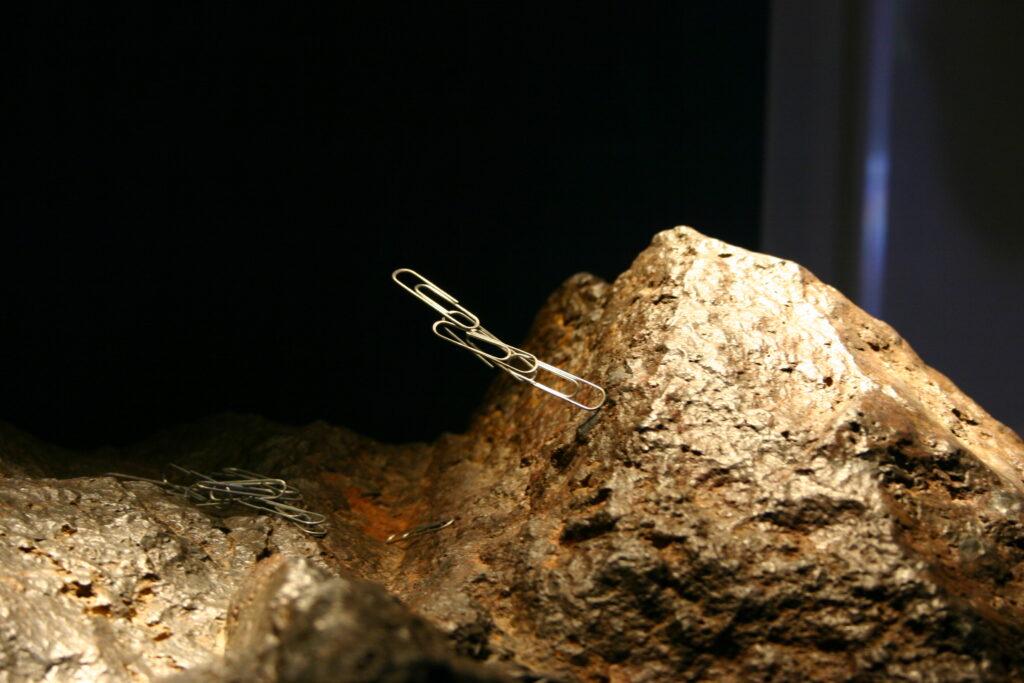

Another possible origin of the name refers to the Greek landscape Magnesia. Georgius Agricola (1494-1555) used the term “magnetic stone” in his well-known work De Re Metallica in 1550 as an ingredient for glass production.
The reference to the stone magnes, named after a shepherd of the same name, can be found in works by the Roman writer Pliny, the Elder. Pliny distinguished two types of magnes; a “male” and a “female,” of which only the male had the power to attract iron and thus corresponded to the actual Magnetite. “Female” magnesite was probably manganese ore, similar to the “male” in appearance.


The mineral might have also been named after Magnesia, a landscape in Thessaly or the city of Magnesia. It is also possible that the name Magnetite comes from other Greek or Asia Minor places of the same name, in which iron ore chunks with magnetic properties were found over 2500 years ago.
Occurrence
Magnetite occurs in solid or granular form and also as crystals. The latter are often octahedral in shape, so each has eight triangular boundary surfaces. It is a ubiquitous mineral, but it is rarely the main component of an iron rock.
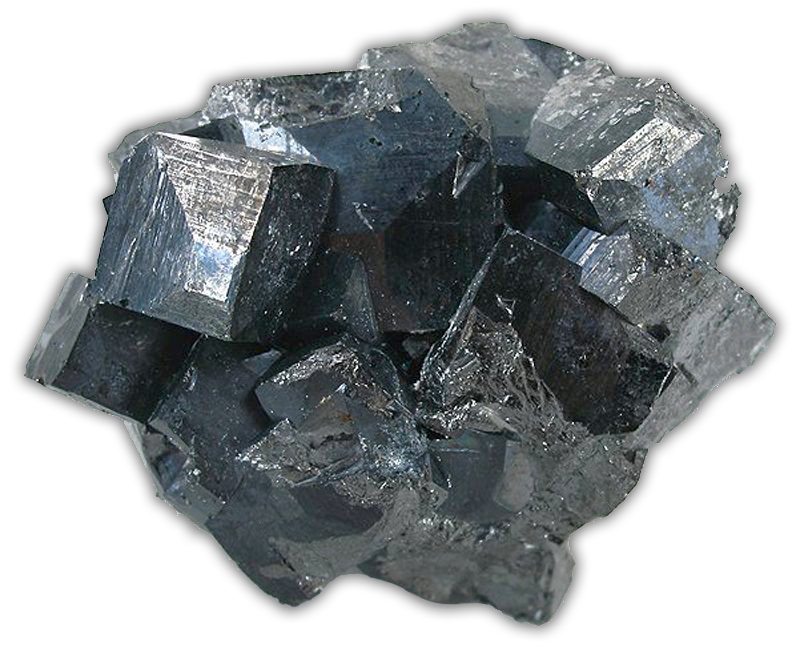

Magnetite is found in numerous igneous rocks such as basalt, diabase, and gabbro in metamorphic rocks. Its hardness means that Magnetite remains intact as sand in river sediments despite weathering processes.
Most of the Canadian Magnetite comes from the Labrador Trough region, on the border between Newfoundland and Quebec and Labrador. Vast deposits of Magnetite can be found in Nunavut, Faraday Township, Hastings County, Ontario, and Outaouais, Québec, Canada. Magnetite deposits are mined in British Columbia at Mount Polley.
Magnetite Uses
Dense Media Separation
Magnetite can be used in industry as a giant magnet. This has applications for sorting valuable materials from others in order to extract value. Those that panned for gold used pans, water, and agitation to remove dirt and debris from valuable nuggets of the valuable ore. Recyclers use magnetite in huge magets to sort valuable scrap metal from less valuable material. Magnetite mining helps the world extract value in an efficient way, whether from raw material or to repurpose discarded material in a green and environmentally friendly manner.
Dense Media Separation has its origins in cleaning coal. Finer coal material is separated from impurities making the energy derived from coal mining cleaner and more efficient.
Dense Media Separation is used in recycling industries to sort scrap metal. This is useful to give valuable material new life in everyday products from smartphones to electric vehicles. Magnetite makes recycling much more efficient, reducing the market price for recycled metals, allowing it to compete with newly mined metals in manufacturing.
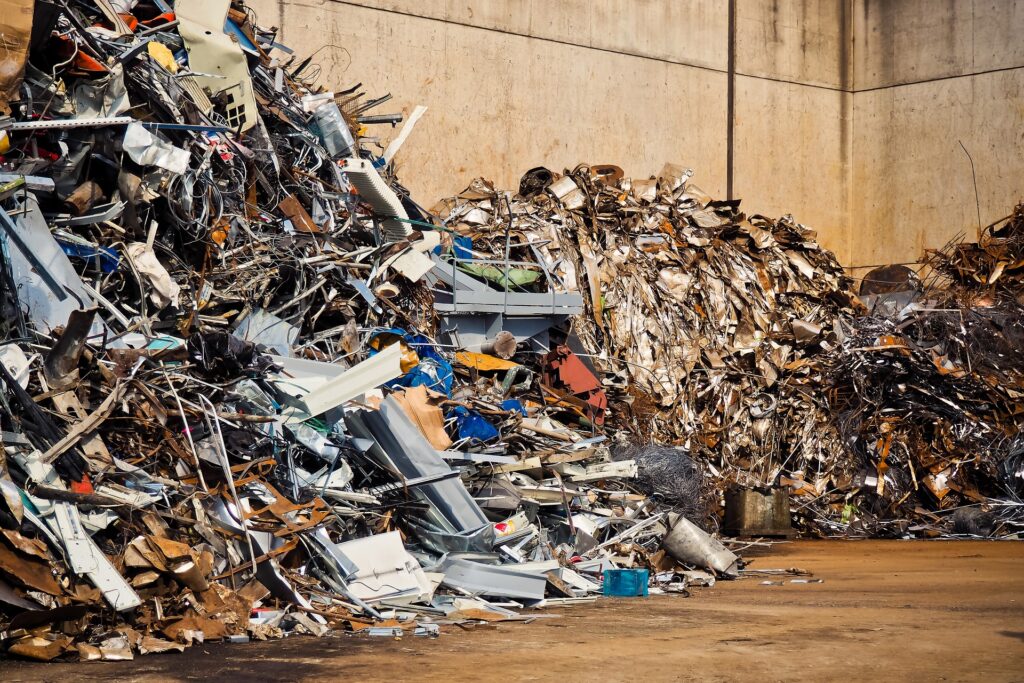

Potash mining is a significant industry in Canada, particularly in the province of Saskatchewan. Potash is primarily used in fertilizer to more cheaply and efficiently feed a hungry world. Magetite, through the process of dense media separation, is used to purify extracted potash. Potash is a mixture of potassium chloride (KCl) and sodium chloride (NaCl). Magnetite is used in dense media separation in the potash extraction to remove NaCl from solution, leaving the valuable KCl behind.
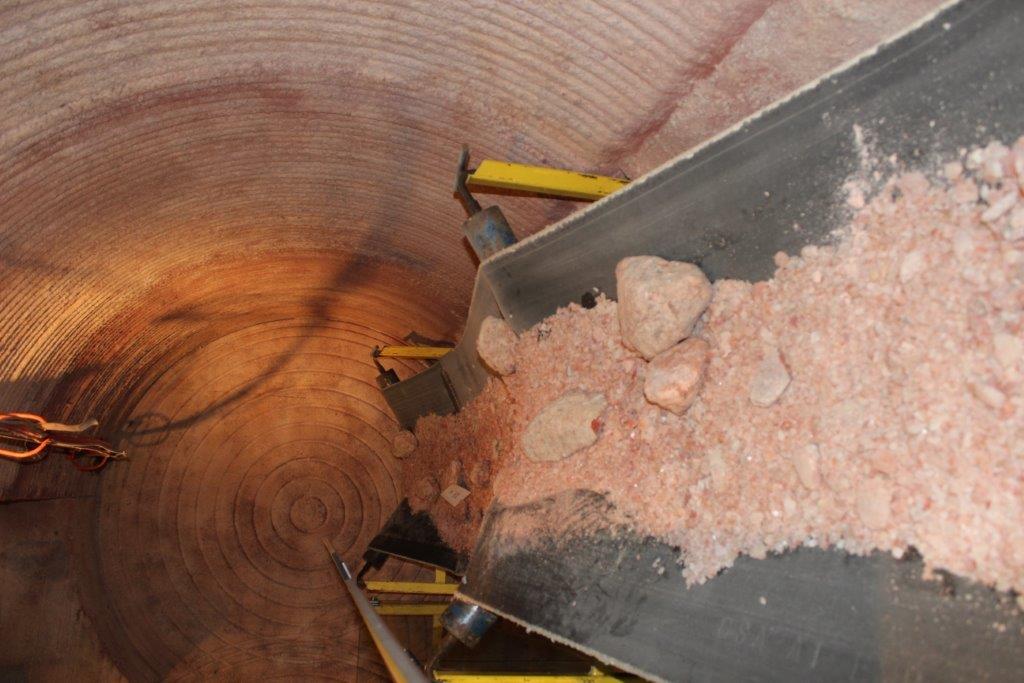

Electrical industry
Along with hematite, Magnetite is one of the essential iron ore. At 72 %, iron has the highest content of this metal. The term iron oxide black means finely ground Magnetite.
Magnetite plays an essential role in the electrical industry. The occurrence of magnetic ores in rocks such as Magnetite or ulvite enables geological studies to be carried out on the earth’s magnetic field orientation.
Due to the 100 % spin polarization of the charge carriers predicted by theory, Magnetite is also traded as a hot candidate for spin valves in spin electronics.
As a building material
Magnetite is used in the construction industry as a naturally granular aggregate with a high bulk density (4.65 to 4.80 kg/dm 3 ) for heavy concrete and structural radiation protection. Thanks to the heavy mineral, the building material can help to attain a solid concrete density of more than 3.2 t/m3; and is helpful in the construction of hospital radiology units.
Radiation protection concrete achieves a shielding function through its mass, but an aggregate with radiation-absorbing properties such as Magnetite increases the protective effect.
Magnetite in jewelry
Classic jewelry clasps are often extremely filigree and, therefore, difficult to close. Magnetic jewelry clasps provide a remedy; they enable necklaces and bracelets to be easily closed. The strong magnets ensure a firm hold. To open the chain or strap, wearers simply have to slide two locking parts sideways.


Heat storage
Industries use natural iron oxide minerals because they can keep the heat very efficiently. They use Magnetite in heat blocks in night storage heaters. Magnetite facilitates more extensive storage of thermal heat much more sustainably compared to other materials.
Magnetite is used in foundry metal protection
The mineral helps to prevent surface defects in metal fixtures in foundries. Natural mineral magnetite where it crashed into a pure, dry, and fine powder that’s used to protected casted metals.
Magnetic therapeutic beliefs in ancient times
Magnetism has been used traditional therapies for thousands of years, though modern science disputes therapeutic effect in placebo trials. The Greeks used magnetism in ancient treatments in 5th century BC. In China, magnets have been integrated into traditional therapy for over 2000 years, magnetism was also in traditional therapeutics in India and ancient Egypt to heal broken bones and other ailments.
Hippocrates described their healing power in the same way as the legendary doctor Paracelsus, who recommended treatments with magnets. Even during this time, women and men wore jewelry made from magnetic ores.
In ancient times magnetite mining became a major economic activity in the Thessalian city of Magnesia. Today, like the ancient Greeks, Canada has a reputation as a leading mining nation with the minerals sector as a core part of the economy. Magnetite mining supports jobs and increases economic growth in provinces and territories where it is mined along with broader benefits to Canada’s national economic output.
